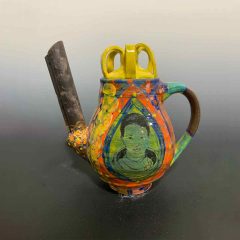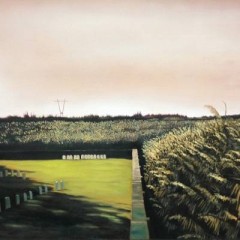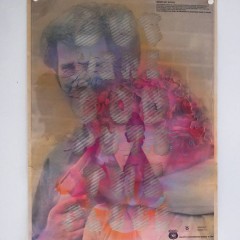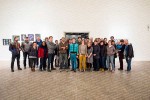Bambi Gallery closed its doors last spring, but its four person show, Lovely Things, popped up this month at Projects Gallery (through January 28). The show’s artists, Matthew Osborn, Stacy Lee Webber, Bonnie Brenda Scott, and Jim Garvey, have disparate practices, from drawing to installation to finely-crafted objects.
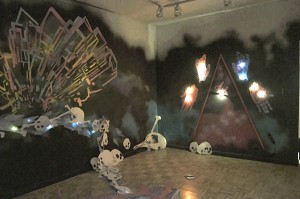
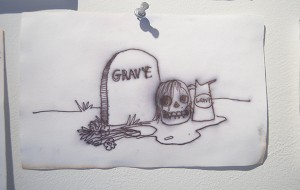
Drawing seems like an everyday activity for Matthew Osborn, using whatever surface is at his disposal. Whether drawing on a late payment notice or on notes during phone conversations, his fantastical drawings are an escape from life’s tedious details. Many of his works have a dark humor. On the late payment notice, two ailing figures cry out in anguish for water with the announcement that the pipes will be shut off. In another untitled work, “GRAVE” is written on a tombstone and on the container that sits nearby, “GRAVY”.
Besides the words themselves, the gravy’s placement seems illogical as a token of respect. However, as an offering, it can be seen as one of life’s simple pleasures, or more pessimistically, one of its few.
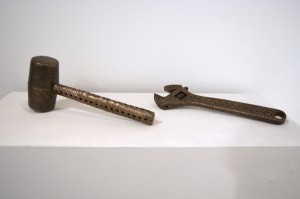
In her Craftsmen Series, Stacy Lee Webber uses coins as a source of metal to create tools. Her “Wrench,” “Mallet,” and “Clamp” are beautifully crafted out of copper metal, reflecting a respect for manual labor and blue collar workers. Her decision to use pennies as a sculptural material also acknowledges the low compensation for physical work and the lack of value it receives. While the work can be appreciated for its earnestness, it seems overly moralistic.
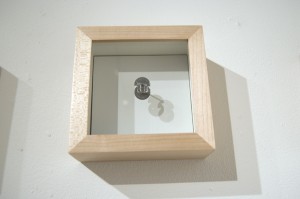
The artist also has small sculptures that appear in shadow boxes. Despite being studies, these sculptures use materials in more interesting ways, and reveal a more complex process.
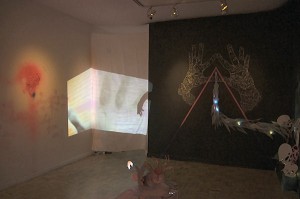
Bonnie Brenda Scott’s installation resembles a ceremonial site with its inclusion of occultist imagery, ghostly apparitions, and skeletal remains. Confessions, unspoken desires, and thoughts are written on the walls in a misty haze of spray paint, giving them the appearance of ghost writing. Overall, the installation reads as a yearning for the supernatural power and wish fulfillment.
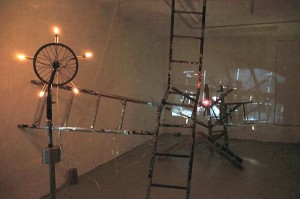
In “From Here to There” by Jim Garvey, a wooden structure casts a shadow and partially obscures a looping projection of mashed-up television footage. The structure is composed of ladders, and their placement at unusual angles creates a feeling of uncertainty and confusion. Red lights attached to the wooden structure also add to this sense of chaos in the darkened space, and the video’s quick cuts and booming soundtrack create a sensory overload. Although the video is partially hidden, violence, celebrities, and other subjects of cultural fascination are still visible. By partially obscuring the video, Garvey draws attention to our continuous consumption of these images through a mediated experience.
Overall, the show seems like a nod to Bambi’s past, and a desire to continue supporting artistic production.


